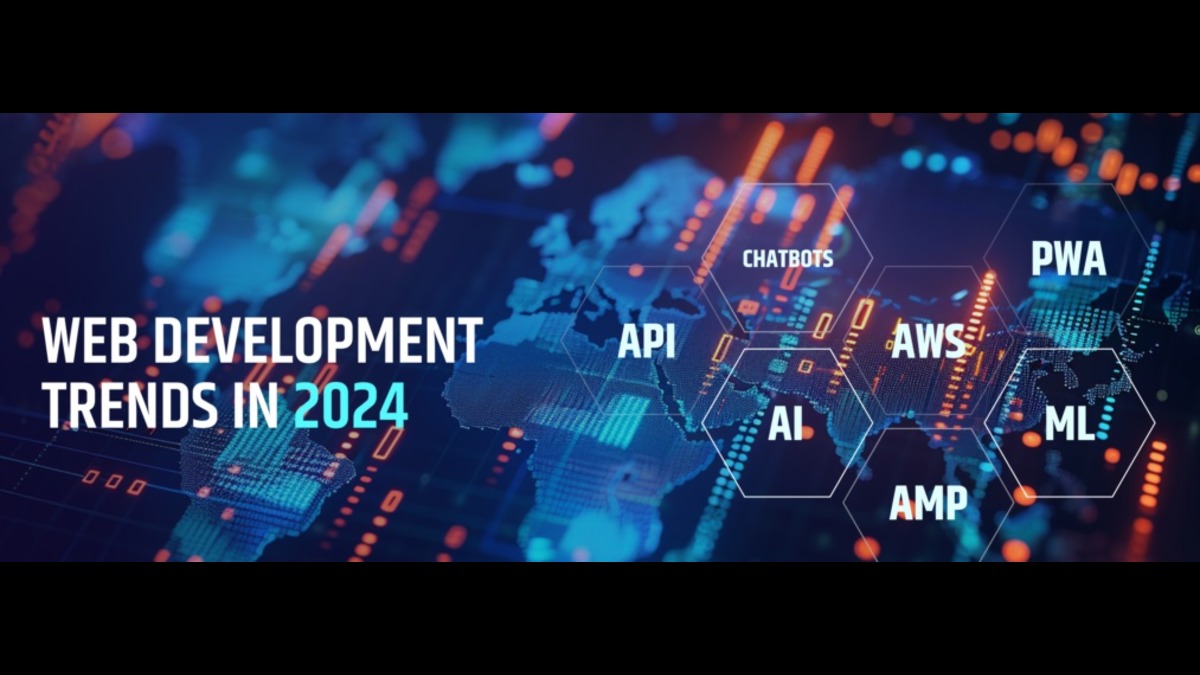Web development is a constantly evolving field, with new technologies and practices emerging regularly. As we move through 2024, several trends are shaping the landscape of web development:
1. AI and Machine Learning Integration
- Personalization: Websites are increasingly using AI to offer personalized experiences. This includes content recommendations, personalized marketing, and adaptive user interfaces.
- Chatbots and Virtual Assistants: Enhanced AI capabilities are making chatbots and virtual assistants more efficient in handling customer queries and providing support.
2. Progressive Web Apps (PWAs)
- Offline Functionality: PWAs can work offline or on low-quality networks, enhancing user experience.
- App-like Experience: They provide a similar experience to native apps without the need for an app store download.
3. Single Page Applications (SPAs)
- Faster Load Times: SPAs load a single HTML page and dynamically update content as the user interacts with the app, resulting in faster load times.
- Improved User Experience: They offer a seamless user experience similar to desktop applications.
4. Serverless Architecture
- Cost-Efficiency: This model allows developers to build and run applications without managing server infrastructure, reducing costs.
- Scalability: Serverless architecture can automatically scale with user demand.
5. Jamstack
- Performance: Jamstack websites are faster because they serve pre-rendered pages and assets, reducing the time to first byte (TTFB).
- Security: Decoupled architecture improves security by minimizing server-side vulnerabilities.
6. WebAssembly (Wasm)
- Performance: WebAssembly allows high-performance applications to run in the browser by compiling code written in languages like C, C++, and Rust.
- Interoperability: It enables the integration of more complex applications and functionalities into web browsers.
7. Micro Frontends
- Modularity: Breaking down frontends into smaller, manageable pieces improves maintainability and scalability.
- Team Autonomy: Different teams can work on different parts of the application independently.
8. Voice Search Optimization
- SEO Adaptation: As voice search becomes more prevalent, websites need to optimize their content for voice queries.
- User Interaction: Integrating voice search can enhance user interaction and accessibility.
9. Cybersecurity
- Enhanced Security Measures: With increasing cyber threats, web developers are focusing more on implementing robust security measures, such as HTTPS, Content Security Policies (CSP), and secure code practices.
- Data Privacy: Compliance with data protection regulations like GDPR and CCPA is crucial.
10. Motion UI
- Engagement: Using animations and transitions can make websites more engaging and interactive.
- Guidance: Motion UI can guide users through tasks, making navigation more intuitive.
11. No-Code and Low-Code Development
- Accessibility: These platforms make web development accessible to non-developers, allowing faster prototyping and development.
- Efficiency: They can significantly reduce development time and cost.
12. Enhanced Developer Experience (DX)
- Tooling and Frameworks: The rise of better development tools and frameworks (like Next.js, SvelteKit, and Vite) is enhancing productivity and developer satisfaction.
- Collaboration Tools: Improved collaboration tools and platforms are making it easier for teams to work together seamlessly.
13. Sustainable Web Development
- Eco-Friendly Practices: Developers are increasingly aware of the environmental impact of their work, leading to practices that reduce energy consumption and carbon footprint.
- Efficient Coding: Writing efficient code and optimizing resources contribute to sustainability efforts.
These trends highlight the dynamic nature of web development, driven by technological advancements and changing user expectations. Staying updated with these trends is essential for developers looking to create modern, efficient, and user-friendly web applications.





